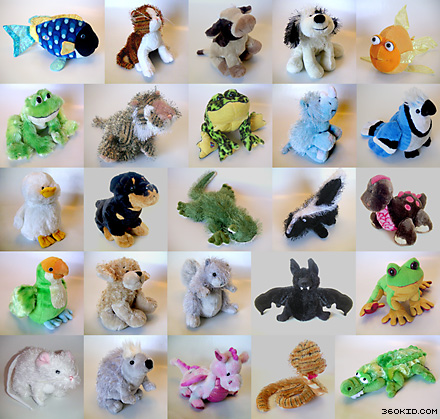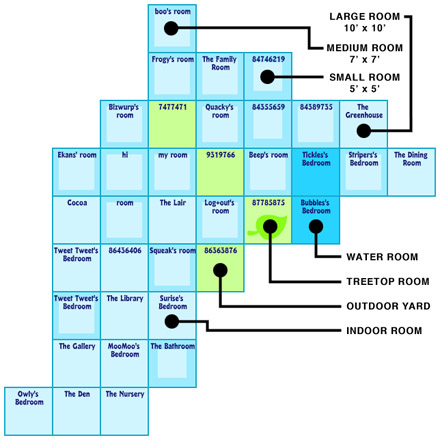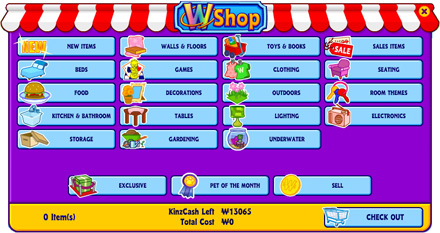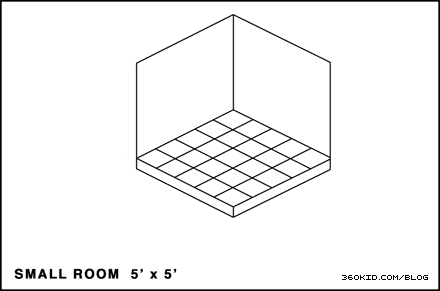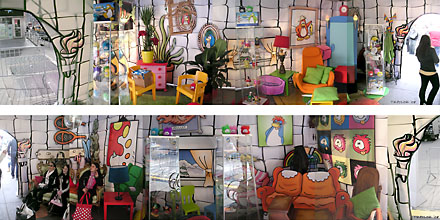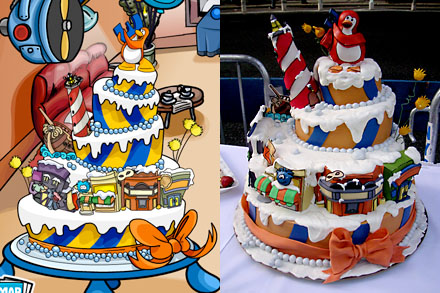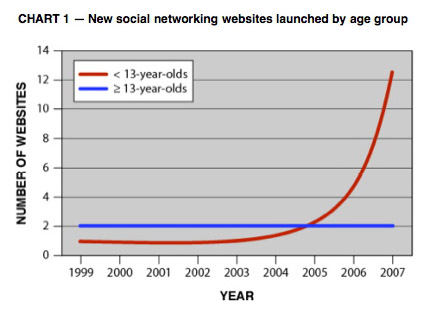Monday, April 27th, 2009
[To read our latest interview with the creative director of Webkinz, click here.]
Three years ago I bought my then seven year old daughter her first Webkinz. She has always enjoyed pretend play offline with the tangible toy and equally enjoys the virtual play online. Both methods of play are done either with friends or alone. These days she plays in the online Webkinz universe a few times a week. She plays games, collects in-world currency called KinzCash, and builds out her Webkinz living space in the virtual world. I asked her recently if she would show me around the online world she had built for her stuffed animal friends. What I saw looked like a sizable, and very detailed build out effort she calls home for her pets. I imagine the size of this virtual home reflects her years of play online and asked her how many Webkinz she owns today. She wasn’t sure, so I suggested we find all of her Webkinz, scattered about her room and around the house, and count them. How many Webkinz plushies did we find? 26 Webkinz in all! I knew she had a good number of them around the house, but was surprised by just how many.
Young fans of Webkinz have many pets in their collection. Sometimes many more than you think possible! Above is a photo of most of the Webkinz in my daughter’s collection. (Click image to see larger photo.)
She received her first Webkinz as a gift from me while I was doing research about the ever expanding online world for kids. After this flagship friend was received, a small number of birthday parties resulted in a few more as gifts from friends. A couple were even earned for successfully completing challenging at-home clean up requests. However, a majority of the Webkinz in her collection were purchased by my daughter, through diligent savings of her small weekly allowance.
If you have young children in your home between the ages of 6 to 10, chances are you’ve already heard the Webkinz buzz. While there are many tangible pets to choose from, and too many features online to count with many more being added regularly, let me pull back the curtain of this online destination to show just one small part of this universe. One central online activity includes the ability to build out a virtual home for your newly acquired animals. The more pets your child acquires, the bigger this virtual home becomes.

Illustrated translations of tangible Webkinz toys in the virtual world.
As many parents will probably already know, every Webkinz plush comes with a card that includes a secret code to gain entry into the Webkinz site. One of the very first activities you child will participate in online is decorate a place for your new pet to live. Your child will receive one “starter” room to decorate. Additional rooms can be added by either a.) saving up KinzCash by playing online games/activities to purchase additional rooms, or b.) through buying additional Webkinz in the real world. My daughter pointed out that you only get an additional room for the first ten Webkinz you buy. After that, no more free rooms. The rest can only be purchased online with KinzCash.
This map, stitched together from multiple screen captures taken within the Webkinz World, shows all of the rooms that have been purchased and designed within my daughter’s collection of Webinz online. She started with just one room and built out this large living space for all of her pets. Clicking on any one of the squares from this map within the Webkinz World will bring you into an orthographic view of the individual room itself. Note the different sizes and themes to each room. (Click image to see larger photo.)
Rooms can be decorated with a wide selection of items for purchase through the WShop, the online equivalent of a home furnishings store. There are plenty of items available to spark a child’s decorative imagination. Chairs, beds, games, TVs, wall paper, you name it. Also, some of the items you can acquire are considered “exclusive” and are only made available from “adopting” your 10th, 15th, 20th (etc.) pet. (Translation of adopting — the purchase of additional Webkinz in the real world.)
The front step to the WShop which displays all the different categories of home furnishings you can buy within the Webkinz World. Selecting a category will bring you deeper into the store, showing the store visitor pictures of the item they may wish to place within one of their pet’s rooms. (Click for larger individual images.)
There are three different room sizes and a small number of different themed rooms. For example, you can purchase themed rooms that reflect a certain holiday, like Halloween, or if your pet lives underwater you can purchase a water room. Your pet moves around the room by clicking on an invisible tile matrix that covers the floor of the room. Large rooms are made up of a 10 x 10 grid. There are also medium sized rooms, 7 x 7, and small rooms, 5 x 5. This grid system also helps with the positioning of items purchased from the WShop within the room.
There are three main room sizes available in Webkinz World and a variety of different themes as well. If one of your Webkinz is a fish, chances are you will want a water room. Ask your child what happens when a non-water animal enters a water room. (Click for larger individual images.)
I’m fascinated with the technical logistics of this room making activity within Webkinz. There are a number of individual parts that need to work perfectly together, and need to scale just right with every new addition to your child’s collection. If your child is a Webkinz fan, ask them how many pets they own. Ask your child’s friends as well. You may be surprised at the answer! I’m amazed at the number of Webkinz my daughter’s friends own. Just this week we met a new friend that had over 20 Webkinz in her collection. One boy in the neighborhood who she sometimes plays with boasts owning 46 Webkinz! What sorts of stories about Webkinz do you hear from your children? What do they like best about Webkinz? How many pets do they own? Thanks for reading and for sharing your comments below!


